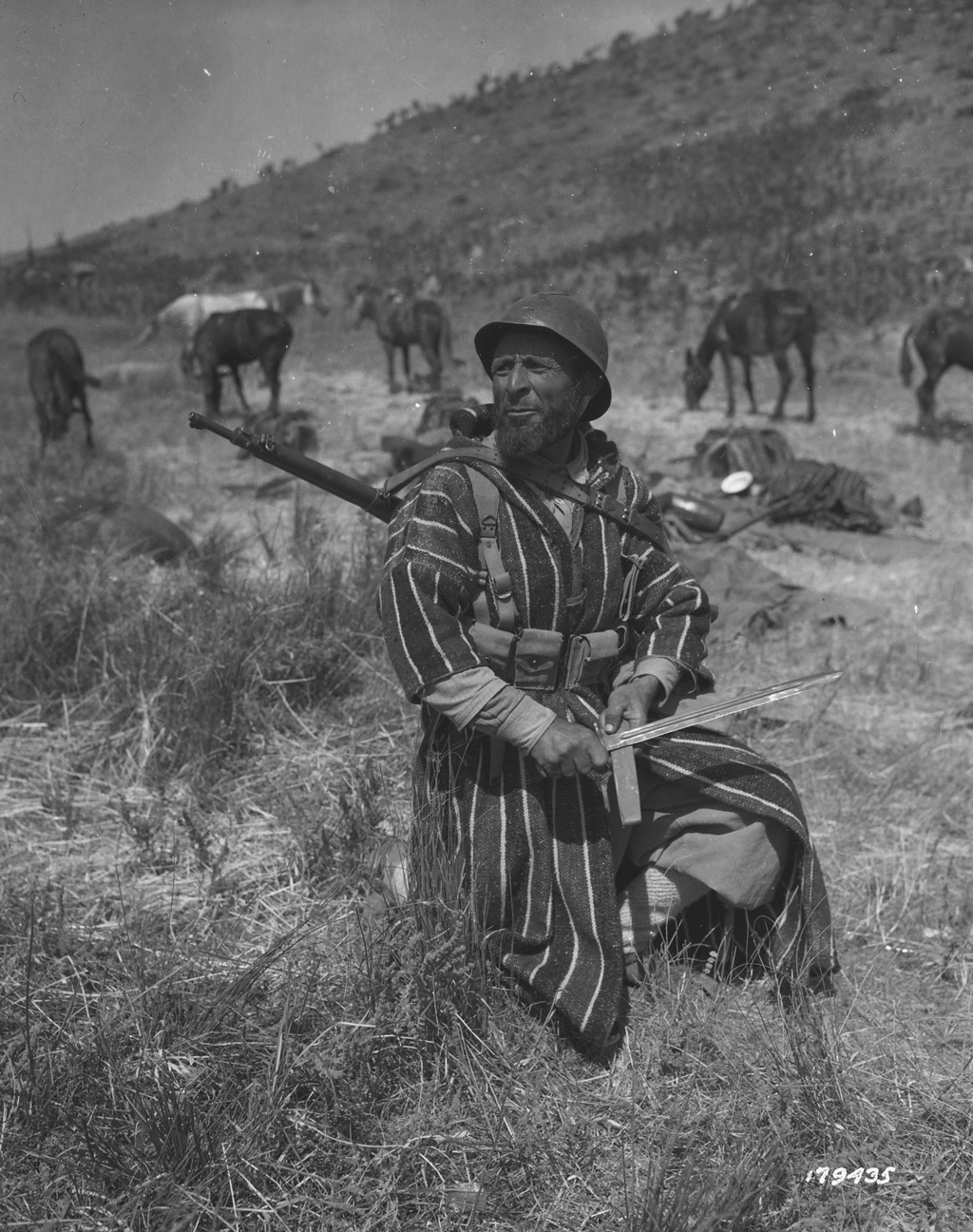
THE FRENCH EXPEDITIONARY FORCE AND THE BREAKTHROUGH OF THE GUSTAV LINE
The French Expeditionary Corps led by General Alphonse Juin, mainly
made up of troops from French protectorates and colonies, has played a
significant role in the allied military operations since their beginning:
along the Bernhardt Line in June 1943 and later on the Gustav Line, in
1944.
Such actions find their most spectacular convergence in the epic battle of
the Belvedere, in Terelle, which has become a subject of study in
international military schools. During this contest, the Tunisian fusiliers
show a surprising ability to adapt to the terrain.
The troops of the 4th Moroccan Infantry Division prevails on the Aurunci
Mountain in May 1944. While only a few months before the British
establish a bridgehead but are unable to advance, the French conquer the
south-western bastion of the Gustav line, Monte Maio, the cornerstone of
the entire German defense system.
On the 13th day of the same month, a French flag flies over the rocky
summit of the Maio. The breach is now open, so the Allies can make use
of their supremacy, but not before the German retreat, which is long in
coming. Following the break, on the night between 17 and 18 May 1944,
the German paratroopers, after an initial hesitation of a few days, decide to
leave Montecassino and its monastery, settling a few kilometers further
north.
Now, they occupy the positions of the Hitler-Senger Line, created in order
to delay the allied advance and cover the retreat of the bulk of the troops
heading to northern Italy. The French Expeditionary Corps’ abilities in
moving through the harsh and inhospitable mountain landscape of the
Cassinate territory are the keystone of the unhinging of the defenses so
tenaciously and long held by the Wehrmacht. Nevertheless, these troops
bring with them a black shadow, repeatedly perpetrating violence against
the helpless local population.
Hundreds are the victims, many of them die due to the diseases contracted
during the abuses.
After the war, the novel La Ciociara by Alberto Moravia and its movie
adaptation by Vittorio De Sica, which is famous for Sophia Loren’s and Jean-
Paul Belmondo’s performances, tell the world the tragedy of the
Marocchinate.
The social malaise for those scabrous facts, never fully recognized by the
French authorities, is still an open wound in the local communities that
suffered the violence.
A dark page in Italy’s history that still demands justice.